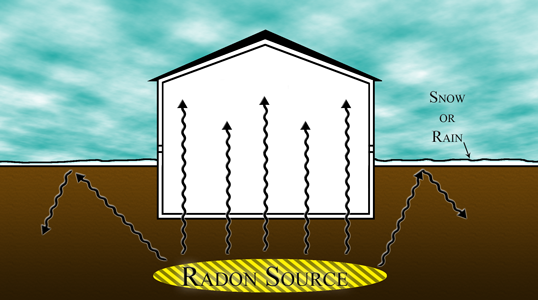Site Navigation
Home
Course Content
This course is designed to teach industry-accepted methods of inspecting and testing homes for radon using national standards of practice. Your journey begins with a thorough discussion of radon gas, its decay products, and a history of its discovery, its prevalence, and the health effects associated with exposure. You will then learn about testing methodologies, how to perform a test for radon, how to perform a visual inspection for conditions that are favorable for radon entry, and how to complete a professional radon inspection report. You will also be exposed to techniques for reducing radon levels, known as mitigation. In addition to technical skills, this course provides practical guidance for informing your clients of the presence of radon, along with other recommendations to ensure your testing and reporting achieves the highest standards of professionalism and accuracy.Course Objectives:
Lesson 1: Understanding Radon
- Define radon gas and describe its characteristics
- Identify the radioactive properties of radon including progeny, half-life and ionization
- Recognize the history of the discovery of radon
- Identify and describe the units of measurement used for radon
- Describe the relationship of uranium mining to radon exposure
- Define what is considered unsafe levels of radon
- Describe how radon can cause disease
- Identify the differences of radon in the air vs radon in water
- Demonstrate an understanding of cellular damage caused by ionizing radiation
- Identify the risks associated with smoking and radon exposure
- Identify the relative risk of radon exposure to that of other causes of death
Lesson 2: Radon Testing
- Learn the testing responsibilities of radon measurement
- Learn about about NRSB and NRPP certification
- Learn about real estate and non-real estate protocol procedures
- Learn about different testing options dependent on conditions
- Learn about visual inspections
- Learn about radon content in soil and water
Lesson 3: Testing Devices
- Identify and know the differences of different radon-detecting devices
- Know the difference between passive and active radon devices
- Be able to complete basic math equations used for calculating radon and working level month exposure to radon
Lesson 4: Results and Reporting
- Know how to make your own QAP (quality assurance plan) to ensure that your tests are precise and your results are reliable
- Know the difference between accuracy, precision, and bias
- Learn to perform duplicate and simultaneous measurements
- Identify "In Control" levels to assure the reliability of your device
- Learn about the risks of test interference, and how to prevent it
- Learn about testing during severe weather and how to fix tests compromised by weather
Lesson 5: Mitigation
- Know mitigation basics and different mitigation methods

Learn about radon measurement during different external conditions.
